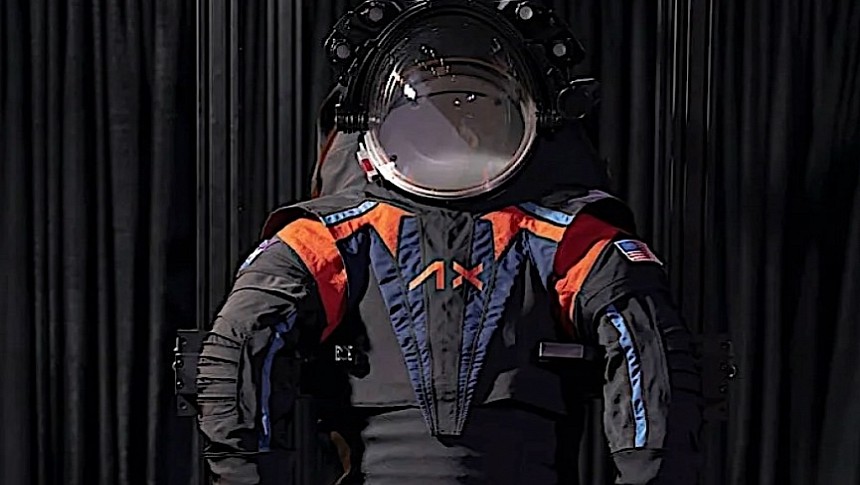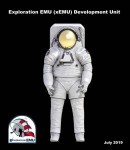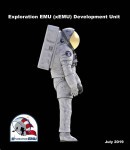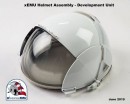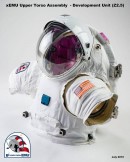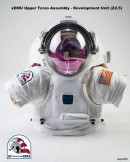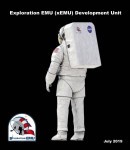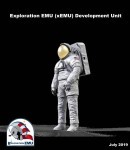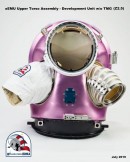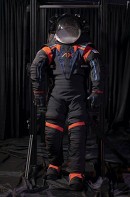As it is looking to modernize current operations but also expand its reach to include the Moon, the American space agency is pressing the accelerator pedal hard when it comes to one of the most important pieces of equipment for an astronaut: the spacesuit.
With the current gear dating back to the 1980s, a new design and new capabilities are needed, not only for use in Earth orbit around the International Space Station (ISS), but also on the surface of the Moon, in light of the first crewed missions there by mid-decade.
It was back in 2019 when NASA announced it was looking for a new spacesuit design for the Artemis program, but only this year did we get some info on what it will be all about and who will make it.
For lunar exploration needs, NASA awarded the spacesuit design to Axiom Space, a company that earlier this year made public the first images of the thing, the so-called AxEMU (Axiom Exploration Extravehicular Mobility Unit). Its exact details though were not released.
Alongside the development of the AxEMU by Axiom, NASA also awarded a while back a contract for the development of a spacewalking suit to Collins Aerospace. That's the one meant to replace the suits currently in use on the ISS.
So, we're basically talking about two distinct pieces of hardware, each designed to work in a specific environment. The one designed for the Moon, for instance, will not only have to withstand extreme temperature and radiation, but it will have to resist the effects of the abrasive lunar dust. That's something a spacewalking suit doesn't even have to consider.
But there's no rule saying the gear should be limited to their initial goal only. Given how NASA likes redundancies, the agency decided this week to give Axiom the green light to adapt the lunar suit for use in space, and Collins to find ways of adapting its suit for deployment on the surface of the Moon.
The decision was probably taken in light of the large number of missions planned in the years ahead in both environments. By essentially pitting the two companies against each other, "we will enhance redundancy, expand future capabilities, and further invest in the space economy."
Design changes require money, of course, and NASA will give the two companies a total of $5 million for the task at hand. It's too early to tell which design the space agency will favor, or if all four suits, two designs from each company, will eventually get to be used.
If and when a spacesuit supplier is selected outside the initial awards, NASA will have said supplier perform safety and performance checks, including in the actual environment the suit is supposed to work in.
It was back in 2019 when NASA announced it was looking for a new spacesuit design for the Artemis program, but only this year did we get some info on what it will be all about and who will make it.
For lunar exploration needs, NASA awarded the spacesuit design to Axiom Space, a company that earlier this year made public the first images of the thing, the so-called AxEMU (Axiom Exploration Extravehicular Mobility Unit). Its exact details though were not released.
Alongside the development of the AxEMU by Axiom, NASA also awarded a while back a contract for the development of a spacewalking suit to Collins Aerospace. That's the one meant to replace the suits currently in use on the ISS.
So, we're basically talking about two distinct pieces of hardware, each designed to work in a specific environment. The one designed for the Moon, for instance, will not only have to withstand extreme temperature and radiation, but it will have to resist the effects of the abrasive lunar dust. That's something a spacewalking suit doesn't even have to consider.
But there's no rule saying the gear should be limited to their initial goal only. Given how NASA likes redundancies, the agency decided this week to give Axiom the green light to adapt the lunar suit for use in space, and Collins to find ways of adapting its suit for deployment on the surface of the Moon.
The decision was probably taken in light of the large number of missions planned in the years ahead in both environments. By essentially pitting the two companies against each other, "we will enhance redundancy, expand future capabilities, and further invest in the space economy."
Design changes require money, of course, and NASA will give the two companies a total of $5 million for the task at hand. It's too early to tell which design the space agency will favor, or if all four suits, two designs from each company, will eventually get to be used.
If and when a spacesuit supplier is selected outside the initial awards, NASA will have said supplier perform safety and performance checks, including in the actual environment the suit is supposed to work in.
